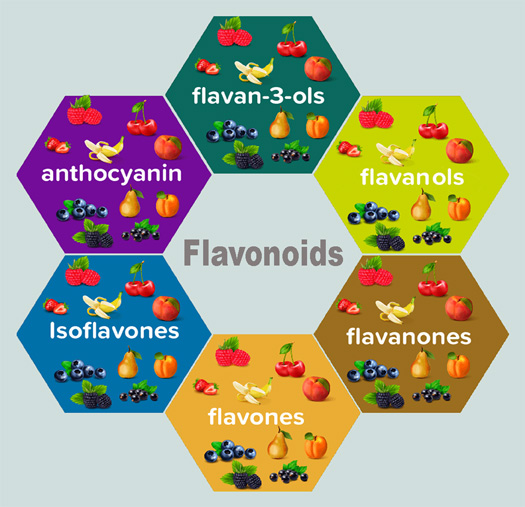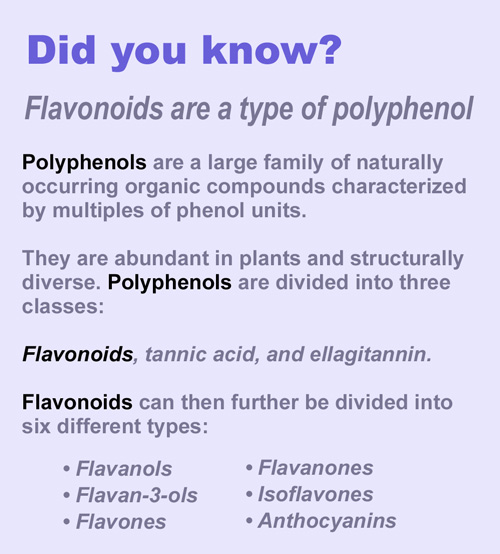A new study has once again demonstrated that a diet rich in flavonoid foods will help improve blood pressure, but this study comes with a twist: It found the blood pressure improvements were more significant when test subjects had a healthy gut microbiome.
Flavonoids are compounds found naturally in many fruits, vegetables and herbs.
Flavonoids are rich in antioxidant activity and can help your body ward off everyday toxins, neutralize free radicals and reduce overall inflammation.
There are six different types of flavonoids found in foods. Each kind is assimilated differently, and offers a different kind of antioxidant protection. Because of this, the more varied the consumption of flavonoids, the more widespread protection that is gained.
The study, which was published in the American Heart Association journal Hypertension in August 2021, provided at least a partial explanation as to why some people have greater cardiovascular protection benefits from flavonoid-rich foods than others.
This important finding should provide encouragement for those who haven’t seen the results they had hoped for after improving their diet. Now, instead of foregoing healthy flavonoid foods because “they don’t work”, a health consumer can first work on improving the diversity of their gut microbiome.
To conduct the study researchers analyzed data from 904 adults between the ages of 25 and 82, 57% of whom were men. The test subjects—all from Germany’s PopGen biobank—were then evaluated for their food intake, gut microbiome, and blood pressure levels.
They were also evaluated by other clinical and molecular phenotyping and regular follow-up examinations. The evaluations included the quantity at which the participants ate numerous flavonoid-rich foods, with flavonoid values assigned based on USDA data.
The gut microbiomes of the participants were assessed by fecal bacterial DNA examination extracted from stool samples.
The researchers found a variety of associations between flavonoid-rich foods and blood pressure reductions.
Moreover, the extent to which gut microbiota appeared to be involved in the process appeared to vary according to the researchers’ analysis.
Overall, participants with a highest intake of flavonoid-rich foods had lower systolic blood pressure levels as well as a greater diversity in their gut microbiome compared to the participants who consumed the lowest levels of flavonoid-rich foods.
The researchers determed up to 15.2% of the association between flavonoid-rich foods and systolic blood pressure could be explained by the diversity found in the participants’ gut microbiome
Specifically, it was found that 1.6 servings of berries per day was linked to an average reduction in systolic blood pressure levels of 4.1 mmHg, and about 12% of that association was also linked to gut microbiome factors.
“Our gut microbiome plays a key role in metabolizing flavonoids to enhance their cardioprotective effects, and this study provides evidence to suggest these blood pressure-lowering effects are achievable with simple changes to the daily diet,” Aedin Cassidy, PhD, lead author of the study and professor of nutrition and preventive medicine at the Institute for Global Food Security at Queen’s University in Belfast, Northern Ireland, said.
The authors of the study noted that previous research has indicated Bifidobacterium and Lactobacillus strains convert flavonoids into metabolites which are very well-established to have cardio-protective benefits. These benefits include improving lipid profiles, decreasing inflammation, and more.
In addition to consuming high-flavonoid foods, supplementing with a high-antioxidant powder like Fruit & Veggie Plus from Optimal Health Systems can drastically improve flavonoid intake.
Since Fruit & Veggie Plus is made from almost 40 different fruits, vegetables and herbs, it provides a wide variety of phytonutrients—a variety that would be impossible to achieve even when consuming the recommended intake of fruits and vegetables. In fact, just one serving-scoop provides more than 13 times the antioxidant potency that the average American conumes each day.
– – –
Sources: Hypertension / AHAJournals.org, Queen’s University.



